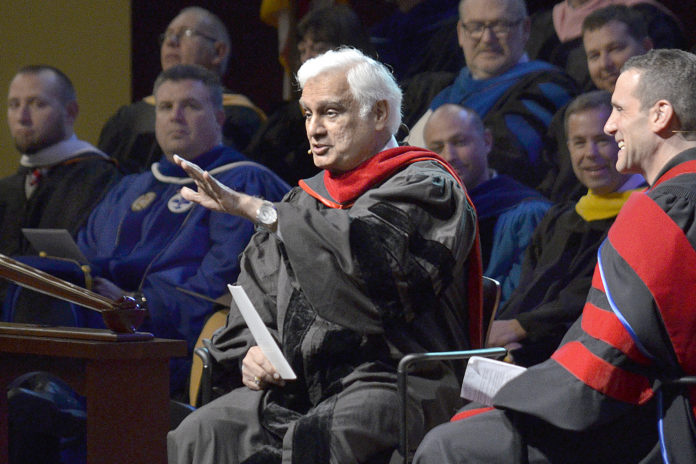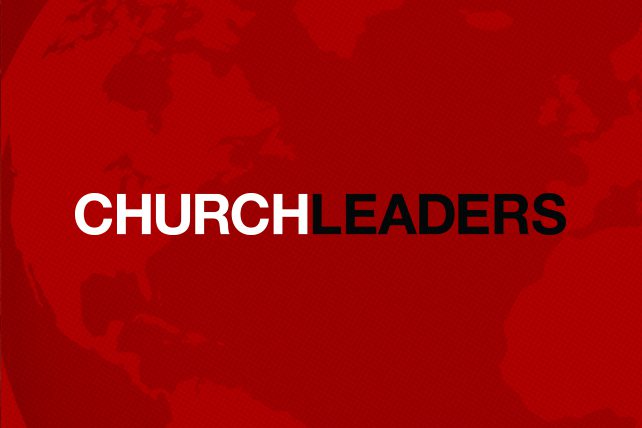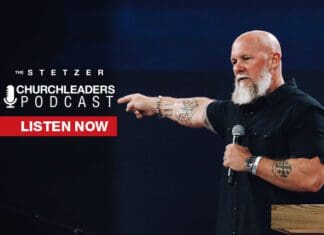The global Christian ministry founded by the late Ravi Zacharias said Wednesday it will suspend fundraising, lay off 60% of its staff and overhaul its mission in the wake of revelations that he engaged in sexual misconduct with massage therapists and carried on many amorous extramarital relationships via texts and email.
Ravi Zacharias International Ministries CEO Sarah Davis announced the organization will shift away from its current mission as a global team of speakers making the case for Christianity. It will become a grant-making entity with funds directed to two areas: RZIM’s original mission of preaching the Gospel, and the prevention of sexual abuse and caring for its victims. Previously the organization had said it would change its name.
“RZIM cannot — indeed should not — continue to operate as an organization in its present form,” said Davis, the eldest daughter of the author and speaker who died last May before his misconduct came to light. “Nor do we believe we can merely rename the organization and move forward with ‘business as usual.’”
“We anticipate this transition to grant-making will be complete in four to six months, and when completed will be accompanied by leadership changes,” she added.
RZIM had experienced a steady decline in financial support in recent months, according to Davis, and had decided to stop soliciting or accepting contributions at least temporarily.
Citing “current economic realities,” she said the organization’s global staff — which included scores of traveling speakers — would be reduced by about 60% beginning Thursday. She said employees who are laid off will receive severance pay and will not be asked to sign nondisclosure agreements.
Allegations of sexual misconduct by Zacharias began to surface last fall in social media and news outlets, notably a Sept. 29 article in the evangelical publication Christianity Today. It asserted that over about five years, he sexually harassed three women who worked as massage therapists at two day spas he co-owned in an Atlanta suburb.
RZIM’s leadership initially challenged the claims, saying they “do not in any way comport with the man we knew for decades — we believe them to be false.”
However, in October it hired an Atlanta law firm which in turn engaged the services of a private investigation company comprising former federal law enforcement officers. The law firm, Miller & Martin, issued a scathing report last month based on interviews with more than 50 people, including more than a dozen massage therapists.
Five of the therapists said Zacharias touched them inappropriately, and one said she was raped, according to the report. It said investigators searching Zacharias’ mobile devices found more than 200 photographs of younger women, including nude images of a salon employee in Malaysia.
Zacharias, who died of cancer at the age of 74, was widely popular and counted many celebrities and prominent Christian leaders among his admirers. Then-Vice President Mike Pence spoke at his memorial service in May.
Zacharias founded his international ministry in 1984 with a mission to engage in “Christian apologetics” — defending Christianity through intellectual arguments. Based in suburban Atlanta, RZIM has operations in about 20 countries and scores of traveling speakers.
After release of the law firm’s report, RZIM’s board said it was hiring a consulting firm, Guidepost Solutions, to conduct an independent assessment of the organization. It also hired lawyer Rachael Denhollander, a prominent advocate for survivors of sexual abuse, to serve as a confidential liaison with survivors of abuse related to RZIM.
RZIM also said it is removing Zacharias’ publications and videos from its website and social media platforms.
This article written by David Crary originally appeared here.



 Station 2: Judas Agrees to Betrayal
Station 2: Judas Agrees to Betrayal









